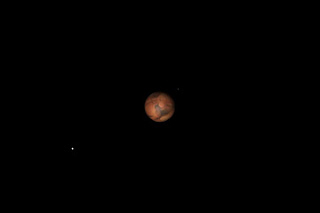Earth Directed! - Sun blasts solar storm volley at Earth, the second in two days
The sun fired off an intense solar storm at Earth Wednesday — the second in two days — hurtling billions of tons of charged particles at our planet, but it should not pose a threat to people on the ground, NASA says.
The solar eruption, called a coronal mass ejection, occurred Wednesday at 1:24 a.m. ET and sent charged particles streaking outward at 380 miles per second. That's just over 1.3 million mph (2.2 million kilometers per hour). The solar fallout from the sun storm is expected to reach Earth within the next three days.
"These particles cannot travel through the atmosphere to harm humans on Earth, but they can affect electronic systems in satellites and on the ground," NASA officials explained in a statement. [Solar Max Photos: Sun Storms of 2013]
Wednesday's solar storm erupted just 21 hours after another powerful coronal mass ejection (NASA calls them CMEs) on Tuesday. That solar tempest also sent billions of tons of solar particles on their way to Earth.
"Earth-directed CMEs can cause a space weather phenomenon called a geomagnetic storm, which occurs when they funnel energy into Earth's magnetic envelope, the magnetosphere, for an extended period of time," NASA officials said in a description of Wednesday's solar eruption. "The CME’s magnetic fields peel back the outermost layers of Earth's fields, changing their very shape. In the past, geomagnetic storms caused by CMEs of this strength have usually been mild."
Powerful geomagnetic storms can affect communications signals and spark electrical surges in power grids, NASA officials said. They can also supercharge northern lights displays or aurora observers at high latitudes.
According to Spaceweather.com, a website that tracks space weather and skywatching events, the two solar eruptions this week were triggered when vast ropelike filaments of magnetic solar plasma erupted. The CMEs should arrive at Earth in time for weekend aurora watching for stargazers at high latitudes.
"NOAA forecasters expect the CMEs to arrive on Aug. 23-24, possibly sparking geomagnetic storms around the poles," Spaceweather.com stated.
The sun is currently in an active phase of its 11-year solar weather cycle and is expected to reach its peak activity later this year. The current cycle is known as Solar Cycle 24.























